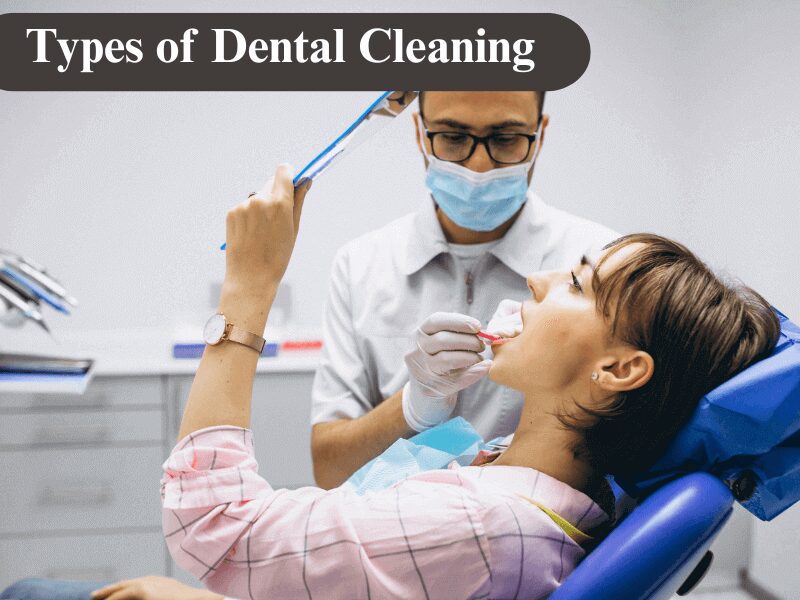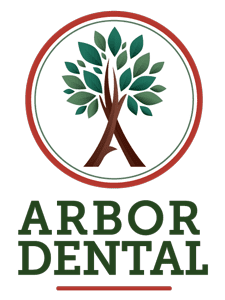Understanding the different types of dental cleaning is essential for maintaining optimal oral health. Not all dental cleanings are the same—each type serves a specific purpose based on your gum health and individual needs. Choosing the appropriate cleaning procedure for routine care or gum disease treatment can significantly enhance your oral health results.
The types of dental cleaning range from standard prophylaxis for healthy mouths to specialized deep cleanings for treating periodontal disease. Your dentist will recommend the appropriate cleaning based on factors like gum pocket depth, tartar buildup, and your dental history. This comprehensive guide explores each type of dental cleaning, helping you understand what to expect and which procedure best suits your oral health situation.

Different Types of Dental Cleaning at a Glance
| Type of Cleaning | Purpose | Frequency | Best For |
| Prophylaxis (Regular Cleaning) | Preventive maintenance, plaque, and tartar removal | Every 6 months | Healthy gums, routine care |
| Scaling and Root Planing (Deep Cleaning) | Treat gum disease, remove tartar below the gumline | As needed, prescribed by the dentist | Early to moderate gum disease |
| Gross Debridement | Remove extensive tartar buildup | One time, before the full exam | Patients who haven’t had cleaning in years |
| Periodontal Maintenance | Ongoing gum disease management | Every 3-4 months | Patients with a history of gum disease |
1. Prophylaxis: The Standard Dental Cleaning
What Is Prophylaxis?
Prophylaxis, commonly known as a regular dental cleaning, is the most common type of preventive dental care. This routine procedure is designed for patients with healthy gums who don’t show signs of periodontal disease. During prophylaxis, your dental hygienist removes plaque and tartar that have accumulated above the gumline since your last visit.
The Prophylaxis Process
A standard prophylaxis cleaning follows a systematic approach to ensure thorough oral care:
Initial Examination: Your hygienist begins with a comprehensive examination of your teeth and gums, checking for cavities, gum inflammation, and other potential issues.
Plaque and Tartar Removal: Using specialized instruments called scalers, the hygienist carefully removes hardened plaque (tartar) from tooth surfaces and along the gumline. This step is crucial because brushing alone cannot remove calcified deposits.
Professional Polishing: After scaling, your teeth are polished with a gritty toothpaste and a rotating brush. This removes surface stains and creates a smooth surface that makes it harder for plaque to accumulate.
Flossing and Fluoride: The hygienist flosses between all teeth and may apply fluoride treatment to strengthen enamel and prevent decay.
Who Needs Regular Prophylaxis?
Prophylaxis is recommended for patients who maintain good oral hygiene and have healthy gums without deep periodontal pockets. If you brush twice daily, floss regularly, and have no history of gum disease, prophylaxis every six months is typically sufficient to maintain your oral health.
Duration and Insurance Coverage
A prophylaxis cleaning typically takes 30 to 60 minutes, depending on the amount of buildup present. Most dental insurance plans cover two prophylaxis cleanings per year as preventive care, often with minimal or no out-of-pocket cost to patients.
2. Scaling and Root Planing: Deep Cleaning for Gum Disease
Understanding Deep Cleaning
Scaling and root planing, commonly referred to as deep cleaning, is a therapeutic procedure for treating gum disease. Unlike prophylaxis, this treatment addresses bacteria and tartar that have penetrated below the gumline into periodontal pockets. Deep cleaning is essential for halting the progression of gingivitis and periodontitis.
The Deep Cleaning Process
Deep cleaning is more intensive than regular cleaning and involves two distinct phases:
Scaling Phase: Your dentist or hygienist uses ultrasonic scalers and hand instruments to remove tartar, plaque, and bacteria from below the gumline. This process cleans deep into periodontal pockets where gum disease bacteria thrive.
Root Planing Phase: The tooth roots are smoothed to remove bacterial toxins and create a clean surface. This smoothing helps gum tissue reattach to the teeth and reduces pocket depth over time.
Anesthesia and Comfort: Because deep cleaning reaches below the gumline, local anesthesia is typically administered to ensure patient comfort. The procedure is often divided into quadrants, treating one section of the mouth per visit.
Who Requires Scaling and Root Planing?
This type of dental cleaning is necessary when you have:
- Gum disease (gingivitis or periodontitis)
- Periodontal pockets measuring 4mm or deeper
- Bleeding gums and gum inflammation
- Bone loss detected on dental X-rays
- Persistent bad breath caused by bacteria below the gumline
Treatment Duration and Follow-Up Care
Each quadrant of deep cleaning may require 1 to 2 hours to complete thoroughly. Most patients need 2 to 4 appointments to treat the entire mouth. After completing scaling and root planing, you’ll transition to periodontal maintenance cleanings every 3 to 4 months to prevent gum disease recurrence.
3. Gross Debridement: Intensive Initial Cleaning
What Is Gross Debridement?
Gross debridement is an intensive preliminary cleaning procedure used when excessive tartar buildup prevents a proper dental examination. This type of cleaning is necessary for patients who haven’t received dental care in several years and have significant calculus accumulation covering their teeth.
The Debridement Process
Heavy-Duty Tartar Removal: Dental professionals use powerful ultrasonic scalers and specialized hand instruments to break apart and remove thick layers of hardened tartar. The electric scaler uses vibrations and water to chip away at calculus deposits.
Multiple Sessions: Depending on the severity of buildup, gross debridement may require multiple appointments to remove all deposits safely and thoroughly.
Comprehensive Follow-Up: After debridement clears the way for proper examination, your dentist can accurately assess your oral health and develop a treatment plan, which may include additional cleanings or restorative work.
Who Needs Gross Debridement?
This intensive cleaning is typically required for:
- Patients who haven’t visited a dentist in three or more years
- Individuals with severe dental neglect
- Those with extensive visible tartar covering the tooth surfaces
- Patients whose heavy buildup prevents proper diagnostic examination
Important Considerations
Gross debridement is a preliminary procedure, not a complete solution. It prepares your mouth for thorough examination and subsequent treatments. After debridement, you’ll likely need either a regular cleaning (if gums are healthy) or a deep cleaning (if gum disease is present).
4. Periodontal Maintenance: Ongoing Gum Disease Management
What Is Periodontal Maintenance?
Periodontal maintenance is a specialized ongoing cleaning for patients who have completed active gum disease treatment. Different types of dental cleanings serve different purposes, and periodontal maintenance specifically prevents the recurrence of periodontitis. This is neither a regular cleaning nor a deep cleaning—it’s a unique maintenance procedure designed for high-risk patients.
The Maintenance Process
Thorough Examination: Each appointment begins with measuring periodontal pocket depths to monitor gum attachment levels and detect any areas of concern.
Targeted Cleaning: The hygienist performs thorough cleaning above and below the gumline, paying special attention to areas previously affected by gum disease. This includes removing plaque and tartar from all tooth surfaces and within periodontal pockets.
Bacterial Control: Special emphasis is placed on disrupting bacterial colonies that cause gum disease, preventing them from re-establishing in treated areas.
Home Care Review: Your dental team reviews your oral hygiene techniques and makes recommendations to improve your daily care routine.
Who Needs Periodontal Maintenance?
Periodontal maintenance is essential for anyone who has:
- Completed scaling and root planing treatment
- A history of moderate to severe periodontitis
- Undergone periodontal surgery
- Chronic gum disease requires ongoing management
Frequency and Long-Term Commitment
Unlike regular cleanings performed every six months, periodontal maintenance occurs every 3 to 4 months. This more frequent schedule is necessary because gum disease bacteria can recolonize quickly in susceptible patients. Maintaining this schedule significantly reduces the risk of disease recurrence and tooth loss.
How to Know Which Type of Dental Cleaning You Need
Determining the appropriate type of dental cleaning requires professional assessment. Your dentist evaluates several key factors:
Periodontal Pocket Depth: Healthy gums have pockets measuring 1-3mm. Pockets of 4mm or deeper indicate gum disease requiring deep cleaning or maintenance.
Gum Health Status: The dentist checks for bleeding, inflammation, recession, and attachment loss—all indicators of periodontal disease severity.
Tartar Accumulation: The amount and location of tartar buildup help determine whether you need regular cleaning, debridement, or deep cleaning.
Dental History: Your past treatments, including previous gum disease or periodontal surgery, influence which cleaning type is appropriate.
Time Since Last Visit: Long gaps without dental care may necessitate more intensive cleaning before routine maintenance can resume.
Bone Loss: X-rays reveal bone loss around teeth, indicating advanced gum disease requiring therapeutic cleaning.
Your dentist will explain their findings and recommend the most appropriate cleaning type for your situation. Never hesitate to ask questions about why a specific procedure is recommended—understanding your oral health empowers you to make informed decisions.
Choosing Between Different Types of Dental Cleanings
When faced with different dental cleaning options, remember that each serves a distinct purpose in oral healthcare:
For Prevention: If you have healthy gums and maintain good oral hygiene, prophylaxis cleanings every six months keep your mouth healthy and prevent disease.
For Treatment: When gum disease has developed, scaling and root planing provide the deep cleaning necessary to eliminate infection and restore gum health.
For Severe Neglect: Gross debridement clears away years of buildup, making proper examination and treatment possible.
For Disease Management: After gum disease treatment, periodontal maintenance prevents recurrence and protects your investment in dental health.
Understanding these distinctions helps you appreciate why your dentist recommends a particular cleaning type and emphasizes the importance of following through with recommended treatment.
Conclusion
Knowing the different types of dental cleaning available empowers you to take an active role in your oral health care. From routine prophylaxis for healthy mouths to specialized periodontal maintenance for managing gum disease, each cleaning type addresses specific oral health needs. The key to optimal dental health is receiving the appropriate type of dental cleaning at the right intervals based on your individual circumstances.
Regular dental visits allow your dentist to monitor your gum health and adjust your cleaning schedule as needed. Following your dentist’s advice for standard six-month cleanings or more frequent periodontal care protects your teeth and gums from disease. Remember, preventive care is always easier and more cost-effective than treating advanced dental problems. Schedule your next dental cleaning today to maintain your healthy smile for years to come.
Frequently Asked Questions
1. What is the difference between regular cleaning and deep cleaning?
Regular cleaning removes plaque above the gumline for healthy gums. Deep cleaning goes below the gumline to treat gum disease by removing bacteria from periodontal pockets. Deep cleaning requires anesthesia and treats active disease, while regular cleaning is preventive.
2. How often should I get different types of dental cleanings?
Frequency depends on oral health. Patients with healthy gums need prophylaxis every 6 months. Those with ga um disease history require periodontal maintenance every 3-4 months. Deep cleaning is performed as needed when the disease is diagnosed.
3. Does insurance cover all types of dental cleaning?
Most plans cover two prophylaxis cleanings yearly as preventive care. Deep cleaning is typically covered as necessary treatment for diagnosed gum disease. Periodontal maintenance coverage varies by plan.
4. Is deep cleaning painful?
Deep cleaning uses local anesthesia, so you shouldn’t feel pain during the procedure. You may experience mild sensitivity for a few days afterward. Your dentist will provide post-treatment care instructions.
5. Can I go back to regular cleanings after deep cleaning?
After deep cleaning, most patients transition to periodontal maintenance every 3-4 months rather than six-month regular cleanings. This frequent schedule is necessary because gum disease patients remain at a higher risk for recurrence.
6. What happens if I skip my recommended cleaning type?
Skipping cleanings allows bacteria and tartar to accumulate, leading to worsening gum disease and potential tooth loss. Regular adherence to your recommended cleaning schedule protects your oral health.



